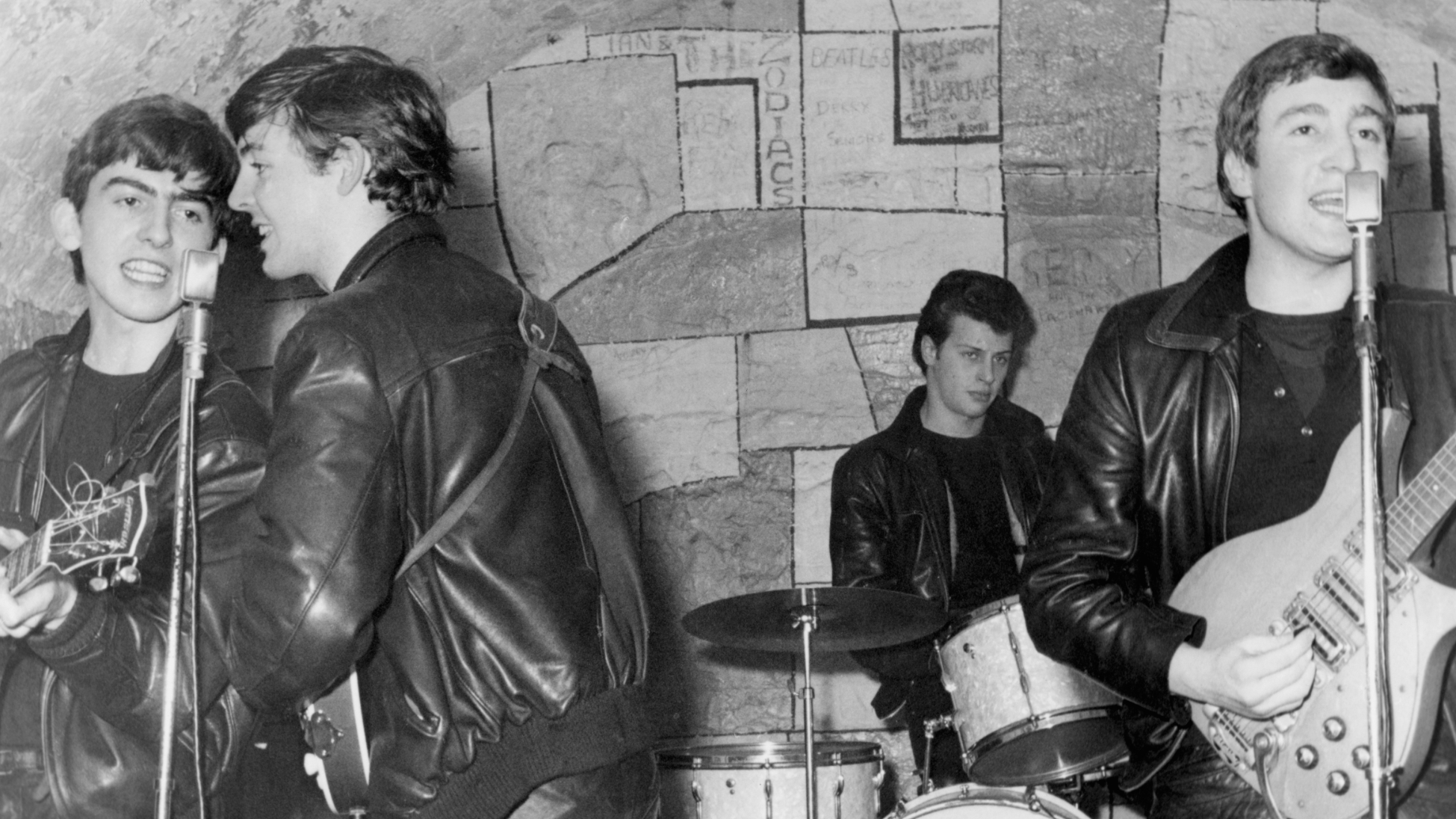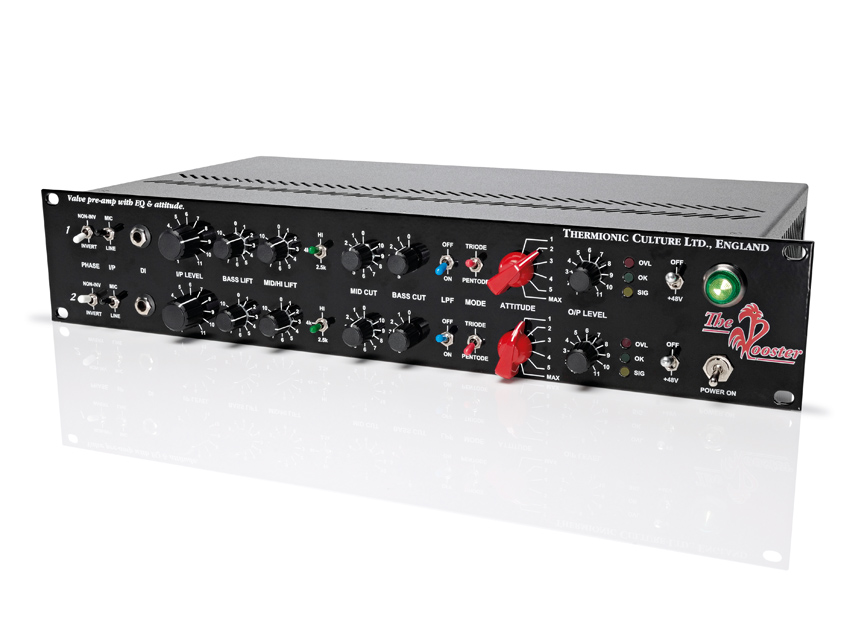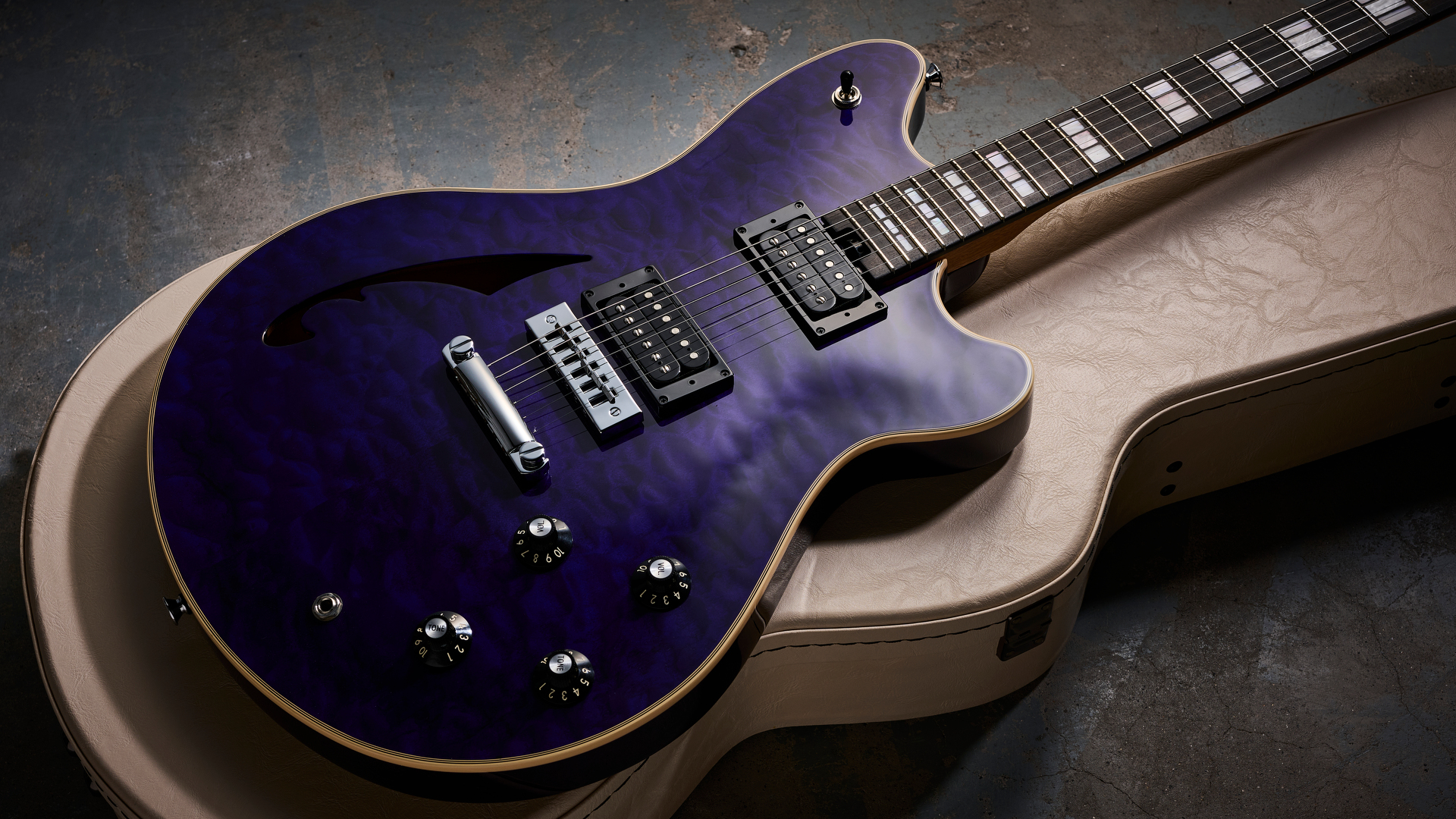MusicRadar Verdict
A unique unit that literally screams quality with a feature set and sound that goes far beyond its price.
Pros
- +
Wide range of harmonic distortion. Simple high quality EQ. Excellent preamp.
Cons
- -
Not cheap.
MusicRadar's got your back
Thermionic Culture product names follow a distinctly avian theme and so it continues with this unit, the Rooster, which provides dual valve based preamps and EQ with 'attitude' courtesy of a distortion function first used in the Culture Vulture.
There are two Rooster models available, one with unbalanced outputs (on review here) and the other with transformer balanced outputs for around £180 more.
The Rooster carries all the hallmarks of the Thermionic Culture aesthetic across its 2U front panel: gloss black finish, neat white legending, quality knobs and switches, and a large green power light. The Rooster presents a well laid out control surface that flows logically from left to right, and with plenty of room between switches and knobs it is very easy to work with.
On each channel the initial phase invert and mic/line selector switches are followed by the 1/4-inch DI input jack and input gain knob, which as with all TC gear goes up to 11. The proceeding EQ section is made up of a Bass Lift knob, a Mid/Hi Lift knob with a frequency selection switch, a Mid Cut knob, a stepped Bass Cut knob and then an LPF toggle switch (on/off).
It's worth noting that the additive controls (Bass Lift, Mid/Hi Lift, etc) rotate clockwise whilst the two reductive controls (Mid and Bass Cut) rotate counter clockwise - an intuitive design feature.
After the EQ comes the Attitude section, made up of the valve mode toggle switch (Triode or Pentode) and the 6-step red chicken-head Attitude knob. Finally, there is the Output control (again, goes up to 11), a three LED signal indicator (Signal, OK and Overload) followed by the +48v switch, power switch and light.
The +48v toggle switch is of the 'pull-on' variety which prevents accidental powering up when ribbon mics are plugged in - a very useful touch.
In use
Good design is one thing, but as with all audio gear the sound quality is where you want to spend your money, and in this area the Rooster rules the coop.
There is plenty of aggression courtesy of the Attitude section, but unlike its namesake this aspect is highly controllable and a whole range of tones can be achieved. The ECC81 (12AT7 in the US) valve based preamp, which uses a Sowter 1200Ω transformer for the mic input, has plenty of clean gain and a clarity across the entire frequency range that effortlessly translates transients and complex mid frequencies.
With Attitude set low (1 or 2) there is plenty of clean gain available between the input and output gain knobs so you can get a healthy level from ribbon mics on relatively quiet sources such as picked acoustic guitars, and in this case the quality of the preamp really shines through making EQ adjustments simple and slight.
The Mid/Hi Lift control offers two broad bell boosts at 2.5kHz or 4kHz with the third 'Hi' setting providing a gentle HF shelving EQ. The Bass Lift, Bass Cut and Mid Cut have no frequency selection controls, but the 'vari slope' approach used in the circuit does shift frequency and Q with gain boosts/cuts. Though this may seem restrictive on paper, in use it makes tone shaping simple and intuitive.
The Rooster works well when cuts and boosts are used simultaneously to create smooth curves across the frequency range. The Bass Lift is broad and can be used to gently enhance the low range and even with extreme settings it does not cloud the bass response and turn the source to mush. Used with the Bass Cut it can really lift the punch of a bass guitar or kick drum.
The 2.5kHz and 4kHz Mid/Hi Lifts are broad enough to lift the presence of a whole range of sources without zoning in so much that it creates a harsh mid range. The Hi setting here is also subtle enough to pull forward the upper ranges without adding any brittle qualities to the source.
"The effect of the Attitude control is dependent on the level that is already being fed forward, so high input gains and EQ settings will affect its final characteristic."
The Mid Cut is centred around 700Hz and is broad enough that only small amounts are needed to clean up the low mid range, but as with all the EQ controls when used in the extremes, one enters a world of tonal shaping that never seems to become harsh. Non-acoustic signals, especially synths, can be totally reshaped with prodigious use of this EQ.
The effect of the Attitude control is dependent on the level that is already being fed forward, so high input gains and EQ settings will affect its final characteristic. In Triode mode as one starts to click up the Attitude knob obviously the gain increases, and this can be compensated for by the output gain control, but also there is a thickening effect as the harmonics of the lower frequencies rise.
Sources with large dynamic ranges (vocals for instance) will start to compress a little and gain a slightly fuzzy edge to their peaks. In small amounts, the distortion is not discernible on its own and seems to enhance the presence of the source without destroying its essential clarity.
Most sources seem to benefit from just a touch of this effect, though some are also enhanced by quite a serious dose of harmonic distortion (e.g. synth leads and basses). In Pentode mode the effect is brighter and more pronounced and can add serious bite to more transient heavy material.
Again, in small amounts this seems to be a sweetening effect, but if the initial gain is high enough the four and five settings garner some hard distortions that really break up any initial subtlety. At the MAX setting the effect is utterly destructive to acoustic sources making them scream, while some (again, synths are well suited) become a whole new sound that will tear through a mix.
Summary
The Rooster is every inch a classic from the highly regarded Thermionic Culture stable and parting with it after this review will be painful. It is by no means a cheap item but for sheer quality of sound and engineering as well as usability it will take some beating.
To get two top-class preamps with simple yet effective EQs for this price is not easy, but add in a healthy dose of Culture Vulture style distortion and there's just no competition with regards to price. The Rooster has no direct competitor as it is a truly unique product and it delivers excellent results across a very wide range of applications, from tracking to mixing and even mastering.
With this in mind we would recommend it to anyone looking to enhance an existing setup of high quality outboard or those looking for a single piece of high-end gear to realise their full sonic potential.
Future Music is the number one magazine for today's producers. Packed with technique and technology we'll help you make great new music. All-access artist interviews, in-depth gear reviews, essential production tutorials and much more. Every marvellous monthly edition features reliable reviews of the latest and greatest hardware and software technology and techniques, unparalleled advice, in-depth interviews, sensational free samples and so much more to improve the experience and outcome of your music-making.

“I need to build a sound of my own that has the power that I want”: Floating Points hates festival sound systems so much that he’s invented his own

“How daring to have a long intro before he’s even singing. It’s like psychedelic Mozart”: With The Rose Of Laura Nyro, Elton John and Brandi Carlile are paying tribute to both a 'forgotten' songwriter and the lost art of the long song intro

“I had a blast. Thank you”: Original Beatles drummer Pete Best retires, aged 83











